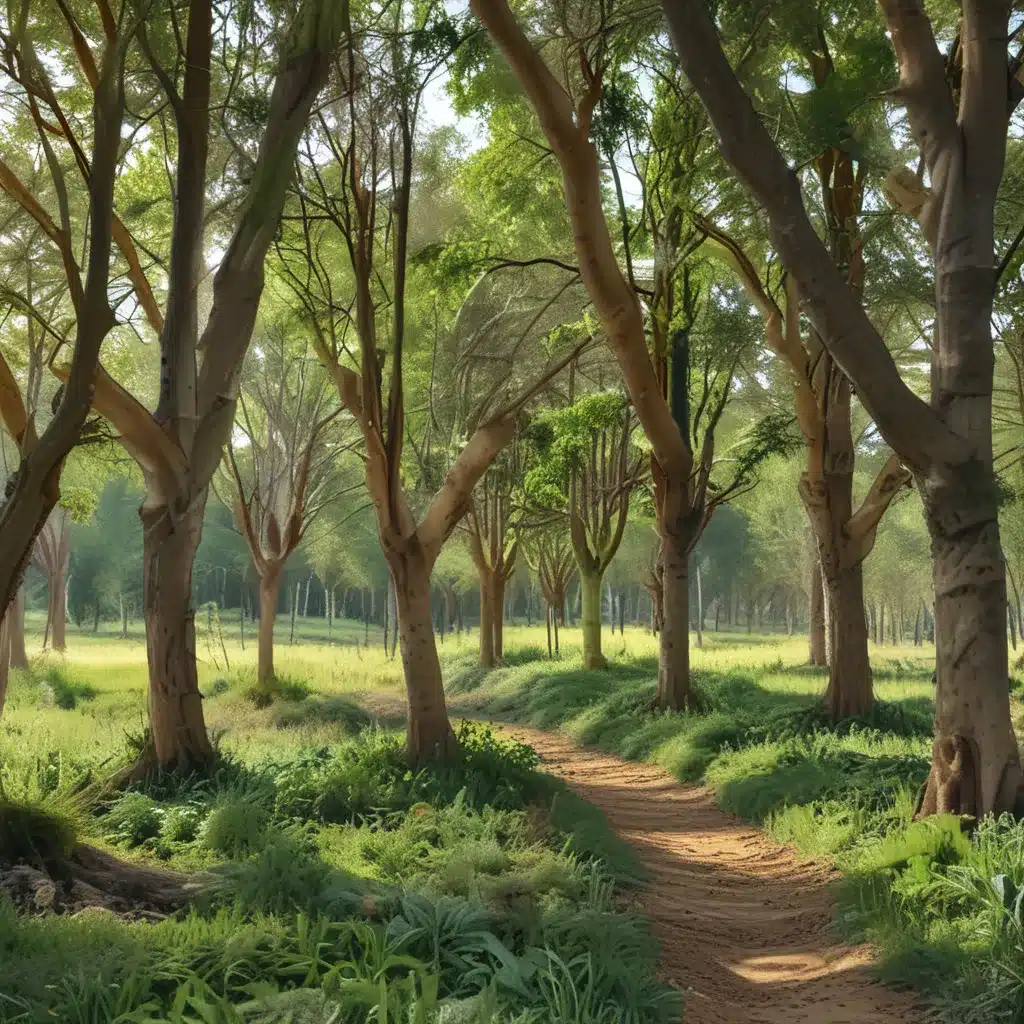
Unlocking the Hidden Harmony of Agroforestry
As I strolled through the lush fields of Thornapple CSA, my senses were immediately enveloped by the symphony of nature. The gentle rustling of leaves, the buzzing of pollinators, and the rich earthy scent of the soil all came together in a captivating dance. It was then that I realized the true essence of this place – the harmonious integration of trees and crops, a practice known as agroforestry.
Agroforestry, a sustainable land management approach, has the power to transform the way we think about agriculture. It’s not just about growing crops; it’s about creating a delicate balance between the natural and the cultivated, where each element supports and enhances the other. As I delved deeper into this fascinating world, I couldn’t help but feel a sense of wonder at the remarkable synergies that emerge when we allow nature to guide our farming practices.
Unraveling the Tapestry of Agroforestry
Imagine a farm where towering trees cast their protective canopy over delicate crops, nourishing the soil and providing a haven for a diverse array of wildlife. This is the essence of agroforestry – a harmonious integration of woody perennials, such as trees and shrubs, with agricultural crops or livestock. Unlike the traditional monoculture approach, agroforestry embraces a more holistic and interconnected system, one that mimics the natural patterns of the ecosystem.
The benefits of this approach are truly astounding. The trees contribute to improved soil health, water conservation, and enhanced biodiversity, while also providing additional income streams for farmers through the sustainable harvest of timber, fruits, or nuts. It’s a win-win situation, where the land is nourished, and the farmers are empowered.
Cultivating a Greener Future
As I strolled through the Thornapple CSA fields, I couldn’t help but notice the lush canopy of trees that towered above the vibrant crops. These trees weren’t just decorative; they were an integral part of the farm’s ecosystem, working in tandem with the cultivated plants to create a thriving and resilient system.
The trees’ deep roots helped to stabilize the soil, preventing erosion and improving water infiltration. Their leaves and branches provided crucial shade, regulating the microclimate and creating the perfect conditions for the delicate crops to thrive. And when the trees shed their leaves, they added valuable organic matter to the soil, enhancing its fertility and nurturing the next generation of plants.
But the benefits of agroforestry extend far beyond the farm’s boundaries. By sequestering carbon and promoting biodiversity, these integrated systems play a vital role in mitigating the effects of climate change. It’s a ripple effect that reaches far and wide, creating a greener, more sustainable future for all.
Empowering Smallholder Farmers
As I chatted with the farmers at Thornapple CSA, I was struck by the profound impact that agroforestry has had on their livelihoods. For many of these small-scale growers, agroforestry represents a transformative shift in the way they approach their land.
“Before, it was just us and the crops, battling against the elements,” one farmer told me, her eyes alight with excitement. “But now, we’ve got these incredible trees working alongside us, providing everything from shade and shelter to additional income streams. It’s like having a whole team of loyal companions in the field!”
Indeed, the integration of trees and shrubs into traditional agricultural settings has been a game-changer for smallholder farmers. By diversifying their income sources and enhancing the overall resilience of their farms, agroforestry has empowered these growers to weather the storms of climate change and market fluctuations.
Embracing Emerging Technologies
As I delved deeper into the world of agroforestry, I couldn’t help but be amazed by the transformative potential of emerging technologies. From remote sensing to precision agriculture, these innovative tools are revolutionizing the way we manage and monitor our integrated farming systems.
Take, for example, the TraceX DMRV platform, which enables real-time monitoring and verification of agroforestry initiatives. By streamlining data collection and automating verification processes, this cutting-edge technology empowers farmers and supply chain managers to orchestrate their agroforestry projects with unparalleled efficiency and transparency.
“It’s like having an invisible team of experts keeping an eye on our fields,” one farmer shared enthusiastically. “We can track the growth and health of our trees, optimize resource use, and even showcase the sustainability of our practices to potential buyers. It’s a game-changer!”
Cultivating a Resilient Future
As I walked back towards the Thornapple CSA farmhouse, I couldn’t help but feel a renewed sense of optimism for the future of agriculture. Agroforestry, with its harmonious integration of trees and crops, isn’t just a farming practice – it’s a testament to the ingenuity of nature and the power of human innovation.
By embracing the synergies of agroforestry, we are not only enriching the land and fostering biodiversity, but we are also paving the way for a more resilient and sustainable future. It’s a future where farmers are empowered, communities are strengthened, and the delicate balance of our planet is preserved.
So, the next time you bite into a juicy fruit or savor the earthy flavors of your Thornapple CSA produce, take a moment to appreciate the intricate web of life that has gone into its creation. For in these simple pleasures, we find the echoes of a greater symphony – one that celebrates the harmony of nature and the ingenuity of humanity.



